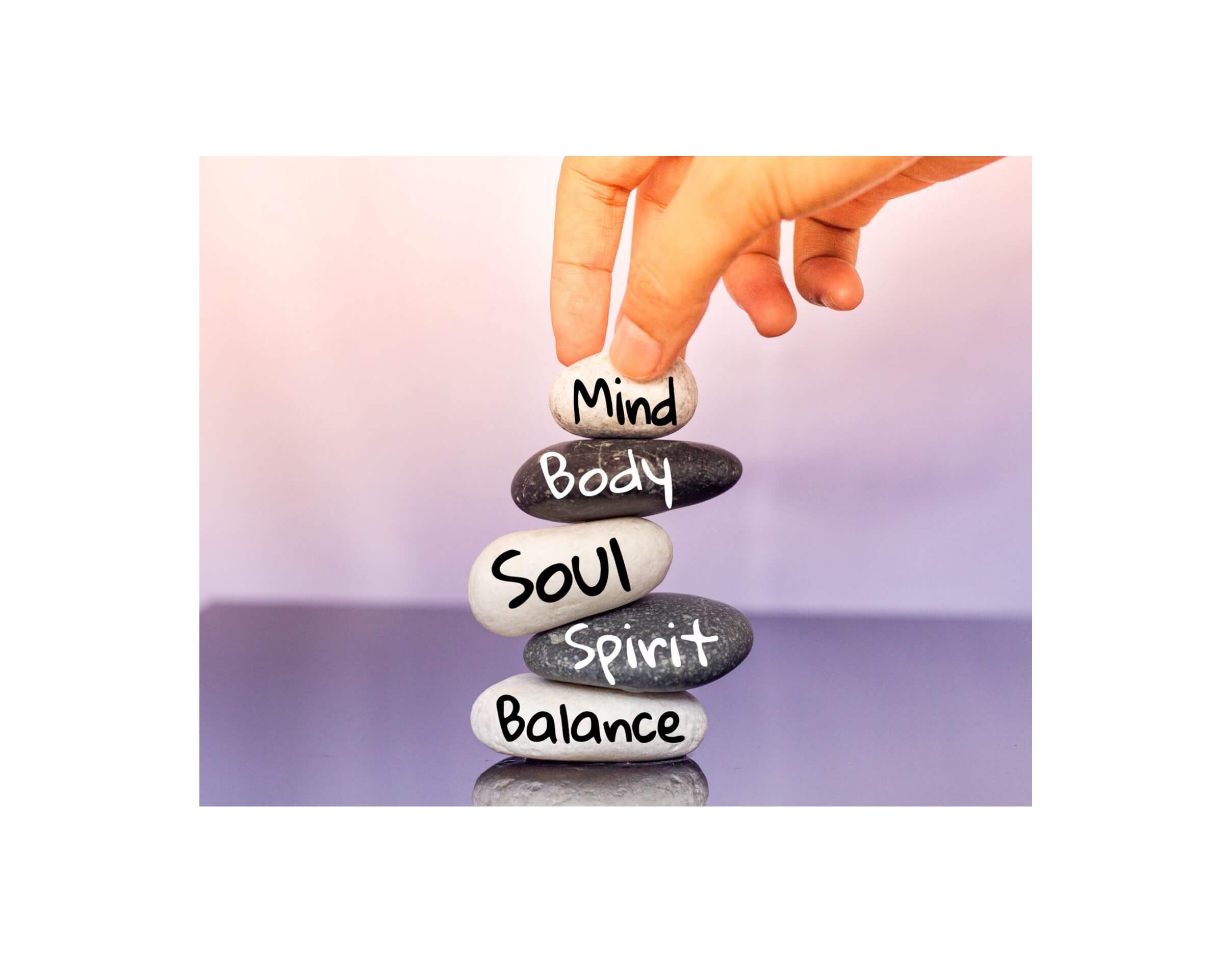In recent years, fitness has evolved from merely focusing on physical strength and endurance to something far more comprehensive: holistic fitness. Unlike traditional fitness routines, which often emphasize physical prowess alone, holistic fitness integrates the body, mind, and spirit. This all-encompassing approach creates balance in life, improving not only physical well-being but also mental and emotional health.
Holistic fitness is about nurturing every aspect of the self and creating harmony between them. It encourages beginners and experienced users alike to integrate various practices like strength training, yoga, mindfulness, meditation, and nutrition to form a fitness routine that engages every dimension of our being. Plus, holistic fitness can be done with minimal equipment. Yoga mats, resistance bands, and free weights can enhance your routine but are not necessary.
How Long Has Holistic Fitness Been Around For?
Holistic fitness as a concept has been around for centuries, though its modern interpretation has evolved more recently. The idea of holistic wellness, which involves balancing physical, mental, emotional, and spiritual well-being, dates back to ancient practices. For instance:
-
Ancient Eastern Traditions: Practices like yoga, Ayurveda, and traditional Chinese medicine (such as Tai Chi and Qigong) have focused on the mind-body connection for over 5,000 years.
-
Greek and Roman Philosophy: Early Western civilizations, particularly the ancient Greeks, promoted a balance between physical fitness, mental health, and moral well-being, with figures like Hippocrates emphasizing the importance of exercise, diet, and rest.
Really fast forward through centuries, and the modern holistic fitness movement started gaining traction in the 1960s and 1970s, alongside the rise of alternative medicine and the wellness industry. It was further popularized by the growing awareness of mental health, the benefits of mindfulness, and integrative medicine that combined traditional fitness with practices like meditation and stress management.
Holistic fitness as a formalized practice became more widespread in the 1980s and 1990s, as fitness professionals began incorporating wellness aspects beyond just physical exercise. Today, the concept continues to evolve, blending traditional wisdom with contemporary fitness practices.
Getting to Know the Foundation of Holistic Fitness: Mind, Body, and Spirit
At its core, holistic fitness is about recognizing that true wellness is multidimensional. If you focus only on the physical aspects of fitness, you might be missing out on the benefits of improved mental clarity, emotional resilience, and a deeper sense of purpose.
The Physical Element
The physical aspect of holistic fitness is what most people are familiar with: building strength, improving cardiovascular health, increasing flexibility, and enhancing endurance. These are all essential for overall health and vitality. However, rather than focusing solely on a particular type of workout, holistic fitness encourages integrating a variety of exercises that serve different purposes for the body.
For example, a hybrid workout routine that combines strength training with yoga or Pilates not only builds muscle but also enhances flexibility, reduces stress, and improves body awareness. High-intensity interval training (HIIT) sessions could be paired with meditative stretching, allowing you to experience both the dynamic and calming aspects of exercise. The idea is not to stick to one style but to mix different forms that challenge your body in different ways.
The Mental Element
The mind plays a critical role in how we approach fitness. Holistic fitness recognizes the importance of mental health and how it influences physical performance. Stress, anxiety, and mental fatigue can all hinder physical health, slowing down recovery times and reducing the motivation to work out.
Mindfulness is a vital tool in holistic fitness. By practicing mindfulness, we can become more aware of our body’s needs and limitations, which helps prevent injury and burnout. Including mindfulness practices such as these during workouts can increase your mental clarity and focus, making your physical efforts more efficient:
-
Guided Meditation: This can be done after a workout or as a standalone practice. Apps like Calm or Headspace offer a range of meditation options.
-
Mindful Movement: While performing exercises, focus on the sensations in your body, your breathing, and your posture. This mindfulness practice enhances mental clarity.
-
Breathing Exercises: These can help calm the nervous system and improve focus before or after a workout session.
Now, programs like yoga incorporate both physical movement and mental presence, requiring participants to stay focused on their breath and posture. This combination of mental awareness and physical action aligns with the holistic fitness philosophy, offering a more integrated workout that engages both the mind and body.
The Spiritual Element
Spirituality, in the context of holistic fitness, doesn't necessarily refer to religious beliefs but to a deeper connection with yourself and the world around you. It's about finding meaning and purpose in your actions and fostering a sense of inner peace and balance.
Practices such as meditation, yoga, and deep breathing are all ways to nurture this spiritual aspect. By quieting the mind and connecting with the present moment, you create a space where you can reflect, rejuvenate, and reconnect with your inner self. This spiritual awareness can enhance your overall well-being, leading to more profound satisfaction from your fitness routine.
Holistic fitness encourages exercises that bring you closer to this spiritual connection, whether it’s through mindful movement, walking in nature, or practicing gratitude.
Hybrid Workouts: Combining Yoga, Strength Training, and Mindfulness
One of the most exciting aspects of holistic fitness is the flexibility and creativity in designing your workout routines. Hybrid workouts—those that combine different types of exercise, such as yoga, strength training, and mindfulness practices—are a popular way to engage both the body and mind.
Yoga and Strength Training
Yoga and strength training may seem like polar opposites, but combining the two creates a balanced and highly effective workout. While strength training builds muscle and improves endurance, yoga enhances flexibility, balance, and body awareness.
A hybrid workout might start with a strength-training session using weights or resistance bands to target different muscle groups, followed by a yoga flow to stretch and elongate the muscles. This approach not only helps improve muscle recovery but also promotes a sense of calm after the high energy of strength exercises.
Yoga poses like warrior and chair engage core strength and stability, while deeper stretches like forward folds and hip openers relax the body and release tension. Alternating between strength and yoga keeps your body agile, strong, and injury-free.
Mindfulness and Meditation in Movement
Mindfulness, when integrated into workouts, takes your routine to another level. Instead of just "going through the motions," mindful exercise requires you to be fully present, paying attention to each movement, breath, and sensation in your body. This heightened awareness allows you to connect more deeply with the exercise, reducing the risk of injury and increasing satisfaction.
One way to incorporate mindfulness is through mindful walking or mindful running, where instead of focusing on the pace, you concentrate on each step, the breath, and the rhythm of your body. Yoga is a natural complement to mindfulness since the practice already emphasizes breath awareness and present-moment focus.
Even strength training can benefit from mindfulness. As you lift weights, focus entirely on the movement, the contraction of your muscles, and the release. This conscious engagement helps you get more out of each rep while also strengthening your mind-body connection.
Mindfulness doesn’t always have to be a separate practice. It can be seamlessly integrated into the workout itself, making you more aware and intentional in every movement.
Incorporating Holistic Fitness into Your Routine
Now that we've explored the key elements of holistic fitness and the power of hybrid workouts, you might wonder how to start incorporating these practices into your everyday routine. The frequency depends on your personal goals and lifestyle. A well-balanced approach might involve 3-4 workout sessions a week with added mindfulness or spiritual practices daily.
Tip #1: Start Slow and Be Intentional
Holistic fitness is about balance, so it’s essential not to rush the process or overload yourself with too many new practices at once. Start by incorporating one new element at a time. For instance, if you already practice strength training, try adding a yoga class once a week to complement your routine.
Alternatively, begin your strength sessions with a few minutes of mindfulness or breathwork. This intentional addition will not only improve your physical performance but also help you remain focused and calm during your workout.
Tip #2: Combine Complementary Workouts
Holistic fitness thrives on variety. Create a weekly routine that includes strength training, yoga, cardio, and meditation. For example:
-
Monday: Strength training followed by a 10-minute meditation.
-
Tuesday: Yoga class focused on deep stretching and breathwork.
-
Wednesday: HIIT cardio session followed by a mindful cool-down stretch.
-
Thursday: Strength training, ending with a few gentle yoga poses.
-
Friday: Active rest day with mindful walking or hiking.
This combination ensures you're working on different aspects of your health without overexerting any single part of your body or mind.
Tip #3: Nourishment for the Body & Mind
Holistic fitness also includes what you put into your body. Nutrition has a significant part in both your physical and mental health, and so, incorporating mindful eating practices is an essential component of the process. Focus on nourishing foods that provide long-lasting energy and support recovery.
Products like CBD topicals (balms, lotions, creams, etc.) CBD oil drops, and even CBD gummies for instances, can support recovery, reduce inflammation, and promote relaxation. These can be especially beneficial post-workout when you need to unwind and prepare your body for the next session.
Tip #4: Track Your Progress in Every Dimension
One of the challenges of holistic fitness is tracking progress since it’s not only about numbers or how much weight you can lift. Progress in holistic fitness comes in many forms—better flexibility, improved mental clarity, deeper spiritual connection, and enhanced emotional well-being.
Keep a fitness journal where you note not just physical accomplishments but also your mental and emotional states. Did you feel more focused during your workout? Were you able to meditate for longer? Have you noticed improvements in how you handle stress?
This mindful approach to progress helps you see the bigger picture and recognize the impact holistic fitness is having on all aspects of your life.
How Holistic Fitness Can Transform Your Life
The benefits of adopting a holistic fitness routine extend far beyond physical appearance or muscle tone. Holistic fitness transforms the way you view wellness by encouraging you to take care of your mind and spirit in equal measure. Here are some of the profound effects that holistic fitness can have on your life:
-
Improved Mental Clarity and Focus: Again, practices like yoga, mindfulness, and meditation strengthen your ability to concentrate, stay present, and manage stress. This mental clarity not only helps you in workouts but also improves productivity and emotional resilience in everyday life.
-
Enhanced Physical Recovery: By incorporating practices that focus on flexibility, mobility, and relaxation, holistic fitness routines help your body recover faster from physical exertion. The inclusion of mindfulness in your workouts makes you more aware of potential injuries, allowing you to avoid overtraining and burnout.
-
Emotional Resilience and Balance: Holistic fitness encourages emotional well-being by fostering a deep connection between mind and body. The mindfulness practices embedded in holistic routines help reduce anxiety, manage stress, and promote emotional balance.
-
A Deeper Connection to Yourself and Your Purpose: Through the spiritual aspects of holistic fitness, you gain a deeper connection with yourself and your goals. This sense of purpose often transcends physical fitness, impacting how you approach your relationships, career, and life challenges.
Holistic Fitness is More Than a Trend—It’s a Sustainable Way to Live a Balanced, Healthy Life!
Overall, holistic fitness isn't a rigid regimen but a flexible, all-encompassing approach to wellness that evolves with your needs. Whether you want to build strength, improve flexibility, enhance your mental clarity, or find spiritual balance, holistic fitness offers tools that work in harmony with each other to support your journey.










































